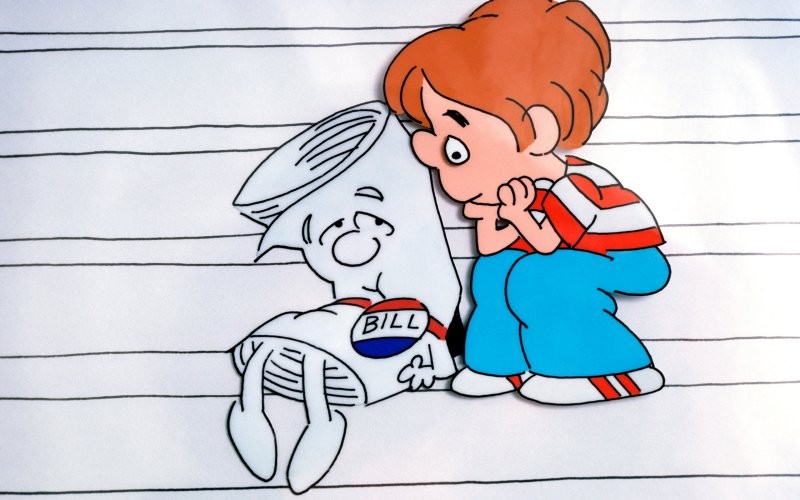One weekend, during a trip to Washington D.C., I found myself in the National Archives, waiting to see the original documents of American democracy. Around me, families and student groups buzzed with anticipation. I overheard a father explaining the significance of the Declaration of Independence to his children, while nearby, teenagers on a school trip debated the Bill of Rights. Then, something remarkable happened. The two conversations merged, united by a shared cultural touchstone: the preamble to the Constitution, recited verbatim from Schoolhouse Rock. The catchy melody and memorable lyrics filled the room as both the father and the students, young and old, sang along to the tune they all knew so well from childhood. This spontaneous moment highlighted two crucial points for me. First, it underscored the lasting impact of Schoolhouse Rock and the powerful role popular media plays in delivering messages that resonate and stick with us – a concept we’ve explored before in the context of government narratives. Second, it hinted at a perhaps uncomfortable truth: despite vast changes in the world of government, our approach to teaching civics hasn’t evolved nearly enough.
This anecdote serves as a starting point to delve into that second point: how we, as a society, educate individuals about government. For those working within government, the world of civics teachers and textbooks might seem distant. However, I argue that these educational foundations play a vital, often underestimated role in both our successes and our challenges, both big and small. It’s time to acknowledge that the traditional American civics curriculum is ripe for a significant overhaul, moving beyond the basics to foster a deeper, more practical understanding of governance.
What Did We Really “Rock and Learn”?
Reflecting on that shared Schoolhouse Rock moment at the National Archives, I must admit to my own similar educational background. From elementary through high school, I, too, learned about “pilgrims and presidents,” the three branches of government, and, of course, “how a bill becomes a law,” all thanks to those catchy tunes. But what did I miss? My education glossed over the intricacies of the Minnesota Department of Administration. It lacked a comprehensive exploration of the three levels of government – local, state, and federal – and their complex interrelationships. Crucially, I remained largely unaware of the various government entities operating within my own community, from city councils to school boards and beyond.
Perhaps most tellingly, as a teenager contemplating my future, I learned to follow presidential campaigns with passion and even volunteered before I could vote. Yet, I lacked the knowledge to effectively engage with the government entities that directly served me and my community in tangible ways.
Now, your experience might differ. Perhaps your civics education provided a more comprehensive picture. However, my experience suggests a broader trend: we often allow important conversations about government – from classrooms to newsrooms – to be dominated by the realm of politics. While these two spheres may appear interchangeable to many, those of us working in government understand the critical distinctions.
Allowing this dynamic to persist fuels further misunderstanding and shortsightedness about government. It contributes to the political dysfunction, gridlock, and partisan strife that hinders progress. To truly improve our society, we need to bridge this gap in understanding and empower citizens with a more robust and relevant civics education.
 Schoolhouse Rock image
Schoolhouse Rock image
It’s Time to Really Teach and Rock (and Learn!)
As government professionals – and especially as government communicators – we are uniquely positioned to reshape this narrative and reclaim the conversation. While national politics often devolve into spectacle and public trust in government continues to decline, we witness countless examples of government innovation, problem-solving, and dedicated efforts to make a positive impact every day.
We must share these stories. We need to actively engage and involve people in the positive aspects of government, rather than allowing partisan discord to dominate the public discourse. From a communications and cultural perspective, this will be a significant challenge. However, a crucial starting point lies in revamping civics education and government coursework.
Let’s move beyond simply teaching students who makes laws and debates policies. Let’s also educate them about who implements and manages these laws, and the everyday realities of governance. Let’s explore the challenges inherent in public service and, most importantly, demonstrate why government matters in their daily lives and how they can and should participate. By making civics relevant and engaging, we can foster a new generation of informed and active citizens. This is where the spirit of “Rock And Learn” can be revitalized for modern education.
As my career in government evolves, I am committed to making a difference in this area and encourage my colleagues to join me. As government professionals, we can build stronger partnerships with educators and students. As policy experts, we can advocate for curriculum updates that better reflect the balance between politics and practical governance. And as citizens, we must remember to go beyond the superficial understanding gained from Schoolhouse Rock and fleeting news headlines when discussing government with our friends and families.
And on your next visit to Washington D.C., remember to look beyond the iconic monuments. Take a moment to appreciate the often-overlooked landmarks of our modern government, like 18F and the Consumer Financial Protection Bureau. These institutions represent the evolving landscape of 21st-century governance just as significantly as the Constitution itself. Let’s ensure future generations truly understand and appreciate the full spectrum of their government, moving beyond the catchy tunes to a deeper, more meaningful civic engagement.
*Adam Giorgi is part of the GovLoop Featured Blogger program, where we feature blog posts by government voices from all across the country (and world!). To see more Featured Blogger posts, click here.